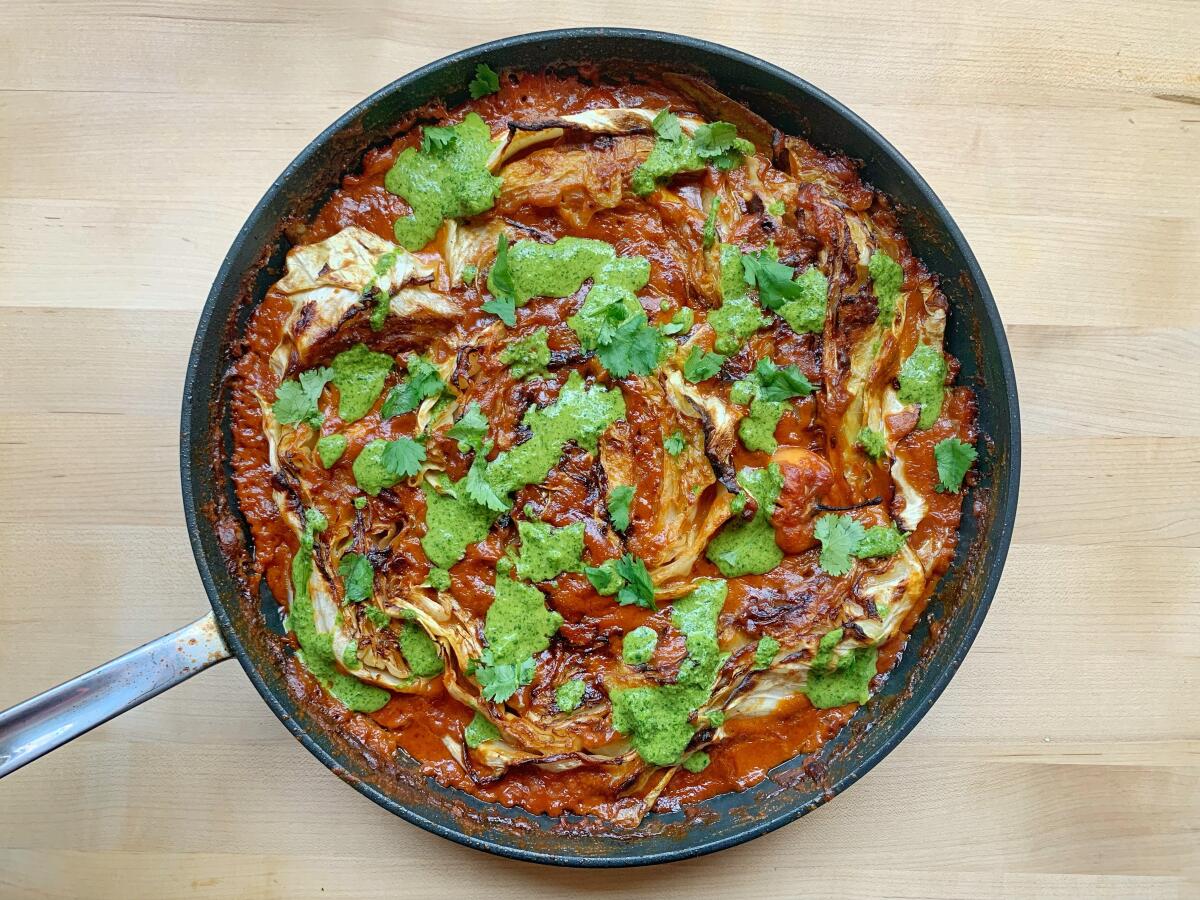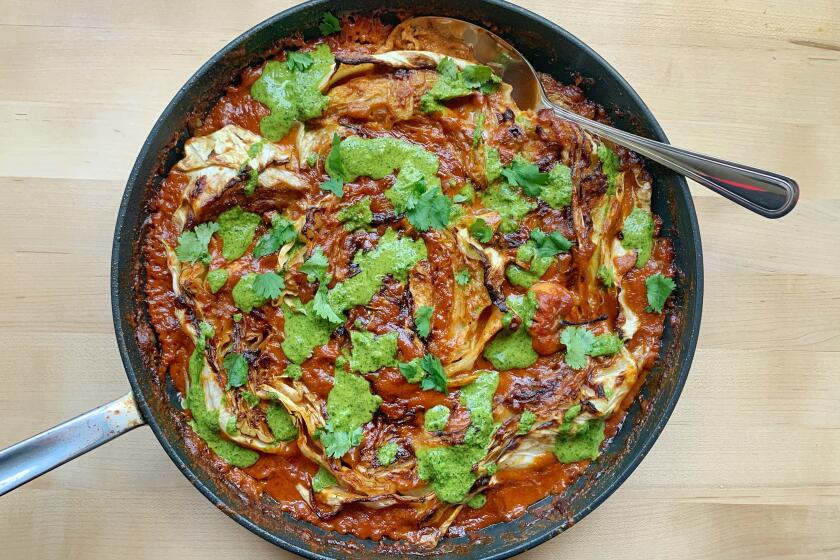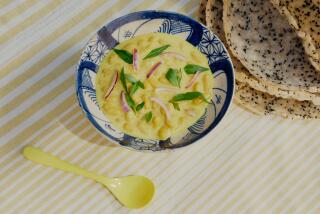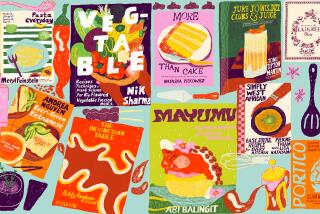A West African-inspired cabbage dish made to impress

- Share via
Of all the vegetables I cook most often, the humble green cabbage just might be my favorite. Not as tedious as Brussels sprouts, sweeter than broccoli, more tender than cauliflower. I love it pickled, be it in a vinegar brine or a spicy kimchi-like ferment. And I’ve gone through my phase (like most of us) of charring the hell out of it and blanketing it with tahini sauce or yogurt. But the more I cook it, the more I settle into my favorite way of eating it: braised in a luscious sauce until spoonably tender.
My partner’s and my favorite cabbage dish to date is a shallow-braised cabbage teeming with cumin and coriander and tomato paste that’s then topped with a cooling dollop of yogurt. My friend Andy Baraghani developed the recipe for Bon Appétit years ago; ever since, at my partner’s request, I’ve been trying to come up with a cabbage dish to win him over.
Cabbage is usually on my mind this time of year because, well, it’s in season, but also because of the impending St. Patrick’s Day holiday and all the visions of corned beef and cabbage that it fosters. And while I love that dish — and any that combines cabbage with salty or spiced meat — this year, I’m looking for inspiration a lot farther south than Ireland.
A decade ago, I learned to make chicken mafé from Pierre Thiam, a Senegalese chef I worked with on a story about that country’s cuisine while I was at Saveur magazine. Now the executive chef at Teranga in Harlem and Midtown Manhattan, Thiam — the author of “Senegal: Modern Senegalese Recipes From the Source to the Bowl” — taught me all about mafé, a stew made with ground peanuts that can be used for braising everything from chicken thighs to lamb shanks. Dried, fermented seafood — which lends a deep savoriness to Senegalese dishes, similarly to how fish sauce is used in Vietnamese or Thai dishes — is also often added, as are fresh Scotch bonnet chiles for heat, which cut through the rich ground nuts.
When I ate Thaim’s version of chicken mafé all those years ago, I remember most loving the cabbage wedges, added along with carrots, okra and sweet potatoes to round out the meaty stew — their sweet but sturdy disposition complementing the deeply savory sauce the best. So I made a cabbage version to home in on my favorite part.
Roasting and grinding peanuts into butter is not that difficult and makes a huge difference in this dish, so I implore you to do that too. Once the nuts are ground, the dish is just like any other braise or stew where you build flavor from the ground up. Onions, garlic and ginger are cooked until browned and soft, then tomato paste is added for a bit of caramelized sweetness.
Next, the peanut butter is simmered with stock until smooth, and spiked with fish sauce (the most convenient substitute for fermented seafood that, according to Thiam, many Senegalese cooks also use), a Scotch bonnet chile and a bay leaf. Finally, the pre-seared cabbage wedges go in, and the whole setup braises in the oven until the cabbage is super tender and the sauce has been reduced to a velvety smooth gravy.
The dish is perfectly wonderful as is, but I’ve found that a sauce made of fresh cilantro and lime juice is nice to drizzle over it too. Its acidity cuts through the rich peanut sauce and helps bring forward the fruitiness of the Scotch bonnet. The sauce is not essential, but my cilantro-hating partner loved it when he tasted it and found that it completed the dish perfectly. If that’s not a ringing endorsement for his new favorite cabbage dish, I don’t know what is.
Get the recipe:
Cabbage Mafé With Limey Cilantro Sauce
More to Read
Eat your way across L.A.
Get our weekly Tasting Notes newsletter for reviews, news and more.
You may occasionally receive promotional content from the Los Angeles Times.












